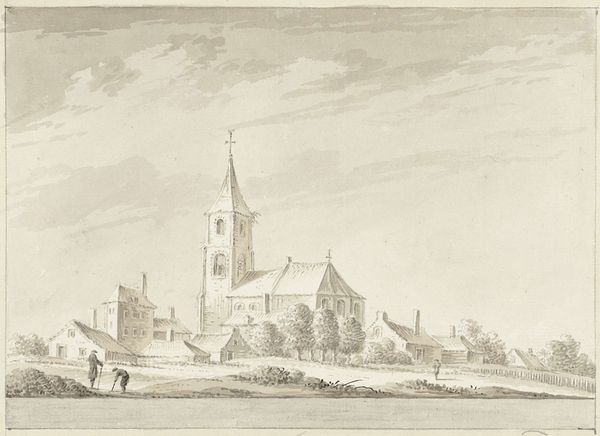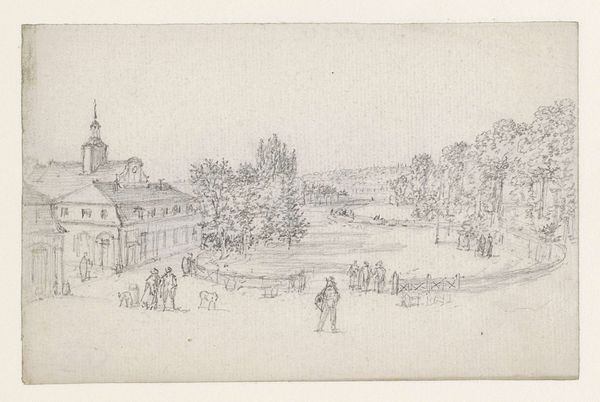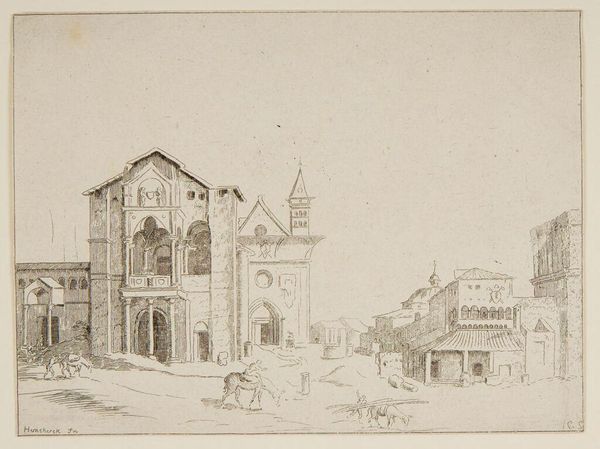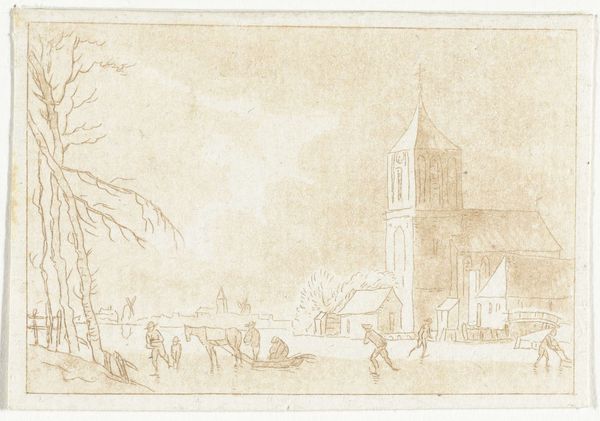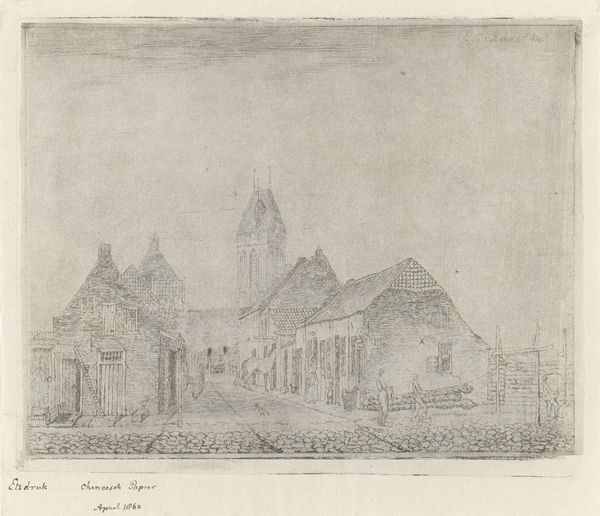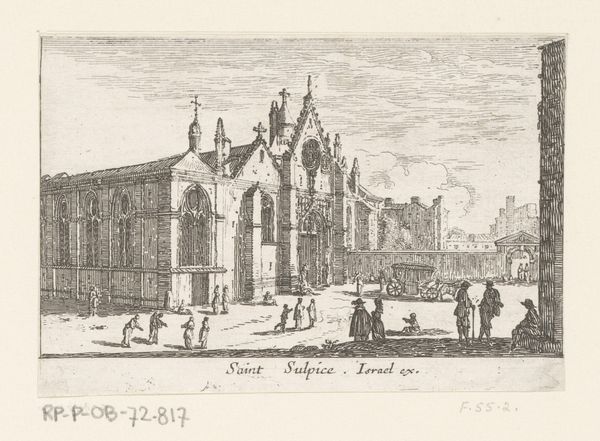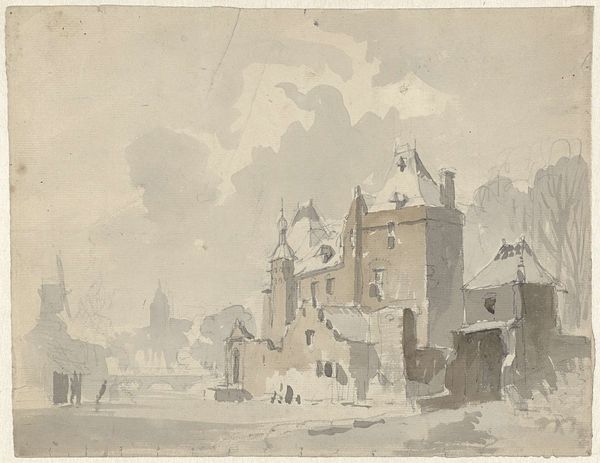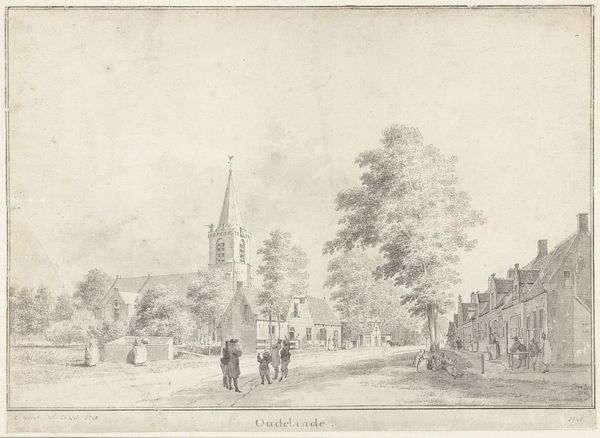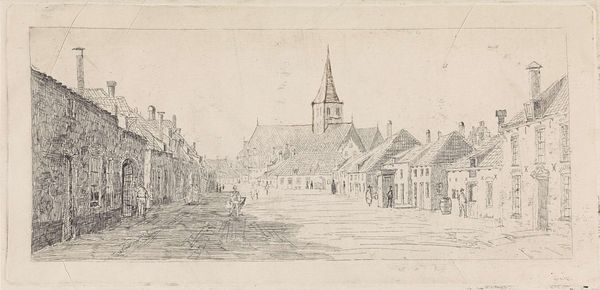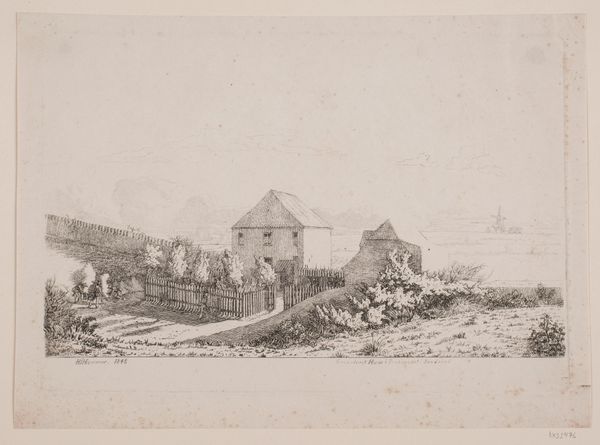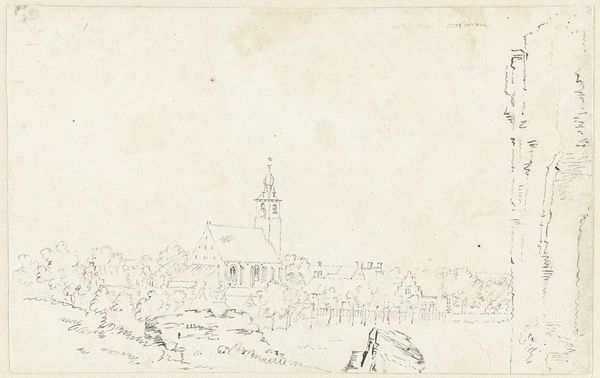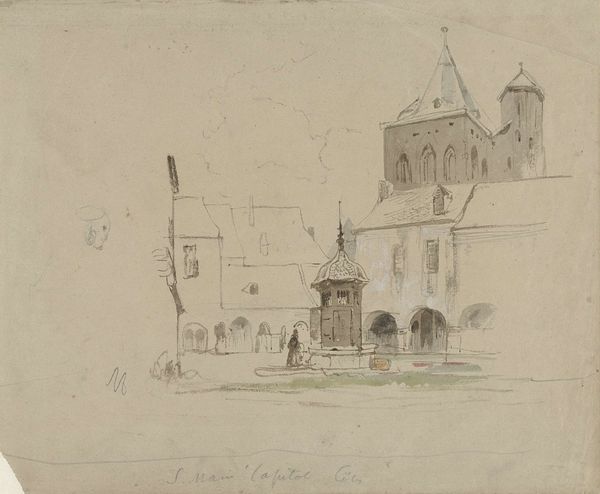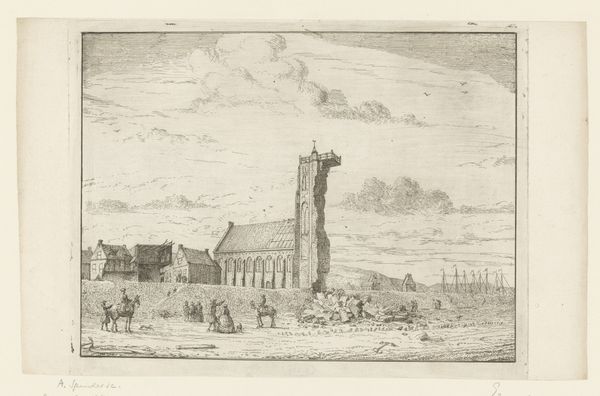
drawing, paper, pencil
#
drawing
#
pencil sketch
#
landscape
#
paper
#
romanticism
#
pencil
#
cityscape
#
realism
Dimensions: height 100 mm, width 155 mm
Copyright: Rijks Museum: Open Domain
Editor: This is "Saint Nicolas des Champs," a pencil on paper drawing by Georges Michel, dating sometime between 1773 and 1843. It depicts a bustling city scene dominated by a large church. The thing that strikes me most is the incredible detail considering it's just pencil. What aspects stand out to you? Curator: For me, the drawing speaks volumes about the conditions of artistic production during that period. The limitations of readily available materials – simple pencil and paper – shaped the artistic output. Consider how the mass production of these materials made sketching accessible to a wider range of artists, yet the social status of drawing remained lower than painting. Editor: So, the artwork's value comes not just from the final image but also from the context of its creation? Curator: Precisely. Michel's choice of pencil elevates the status of this 'humble' medium. The labour involved in rendering such intricate detail using basic tools challenges the distinction between "high art" and "craft". Also, how does the depiction of a church, historically associated with wealth and power, sit alongside everyday laborers in the drawing? Editor: That’s interesting. The proximity definitely creates a visual dialogue between these contrasting social spheres. Curator: Absolutely. And what does it suggest about the church's relationship to its community? Are the figures being represented working to maintain the site? Is this scene selling the virtues of industry in society? Consider it within the industrial shifts of the time. What would the artist make of current commodity relations today? Editor: That really makes me see the piece in a completely new light. I’m thinking more about the accessibility of art materials at the time and how it allowed artists to create works depicting various societal levels. Curator: Exactly. Thinking about materials and their place in society allows us a new lens through which to observe and think critically about the piece.
Comments
No comments
Be the first to comment and join the conversation on the ultimate creative platform.
